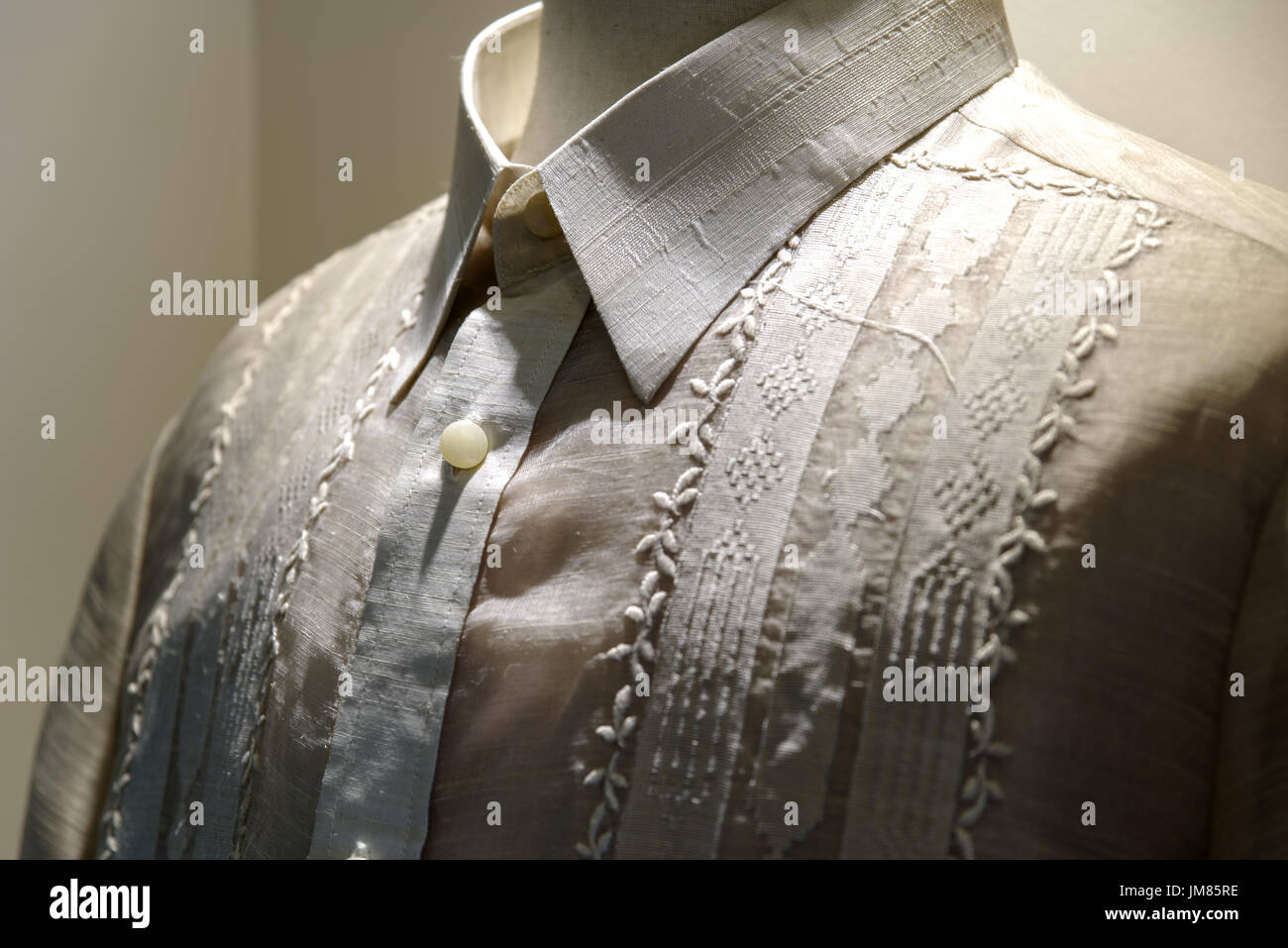The Ultimate Guide To Barong Tagalog
Table of ContentsWhat Does Barong Tagalog Dress Mean?All About Custom Barong TagalogBarong Tagalog Shirt Can Be Fun For Everyone
It consists of the enclitic suffix -ng which indicates that it is modified by or modifies the following word. The origin word of barong is the Tagalog word baro, meaning "clothing" or "apparel". The term is normally not capitalized. "barong tagalog" essentially translates to "Tagalog clothing", the "tagalog" in the name does not indicate that it was a type of outfit special to the Tagalog people, as opposed to other Philippine ethnic teams.
Instead, the name was created to distinguish the gown as indigenous (therefore "tagalog", i. e. ), as opposed to the designs of dress of Europeans and other international cultures.
Barong tagalog can vary substantially in regards to style and also product utilized, but they share common attributes of having long sleeves, embroidery, being buttoned (halfway or directly down the chest), and the absence of pockets. They are additionally put on loosely as well as have slits on both sides. Historically, the material made use of for barong tagalog depended on the social class of the user and the procedure of the occasion.
Little Known Facts About Polo Barongs.

The quality of the product and also the complexity of the needlework were usually indicators of the condition as well as wealth of the user. The embroidery of the barong tagalog are typically positioned on a rectangular section on the front of the breast (called pechera, "t-shirt front", from Spanish pecho, "upper body"), and/or over the entire t-shirt (sabog, from Tagalog for "spread"). navigate here.
Amongst Tagalog males, they were generally combined with a rectangular shape of richly enhanced fabric called the salaual or salawal worn knee-length and prepared between (like an Indian or Thai and Cambodian ); while in females they were paired with a wraparound skirt referred to as the.
Nonetheless, in the Visayas, other than similar baro (which had much shorter sleeves) as well as salaual mixes, men likewise wore colorful robe-like as well as coat-like variants that could extend to well listed below the knees (referred to as the marlota continue reading this and also baquero in Spanish, specifically). These were sometimes belted at the waistline. Amongst Tagalogs, red dyes as well as gold trimmings were indicative of belonging to the aristocracy () or the warrior caste () - read this post here.

Indicators on Barong Tagalog For Women You Need To Know
The couturier Jose "Pitoy" Moreno has hypothesized that this transitional style of shirt was the camisa de chino of later centuries, that makes it a precursor to the barong tagalog. Representations of members of the top classes (including citizens and) in the 18th century showed that they usually put on European-style clothing. check my site.
These were a lot longer than the contemporary barong tagalog, getting to to slightly above the knees. They were likewise typically candy striped with vibrant colors like blue, red, or eco-friendly. They already showed trademarks of the contemporary barong tagalog, including being made of large nipis product, needlework, long sleeves, and a loose silhouette with slits on both sides.
Early examples of barong mahaba generally had high-standing collars or perhaps Elizabethan-style ruffs with narrow cravats. Barong mahaba were normally used with vibrant straight-cut pants with red stripes, checkers, or plaid-like patterns (generally made from imported cambaya, rayadillo, and guingn materials), stovepipe hats (sombrero de copa), and also a kind of stitched velour or leather slip-on footwear understood as corchos. The large textile made use of by barong mahaba likewise demanded the using of an undershirt, called camisn or camiseta, which was additionally used on its very own by citizens. By the 1840s, barong mahaba greatly befalled of fashion. In this period, it evolved right into the modern-day "traditional" barong tagalog, being much shorter with much less ostentatious folded up collars, while still keeping the sheer fabric and other baro characteristics.